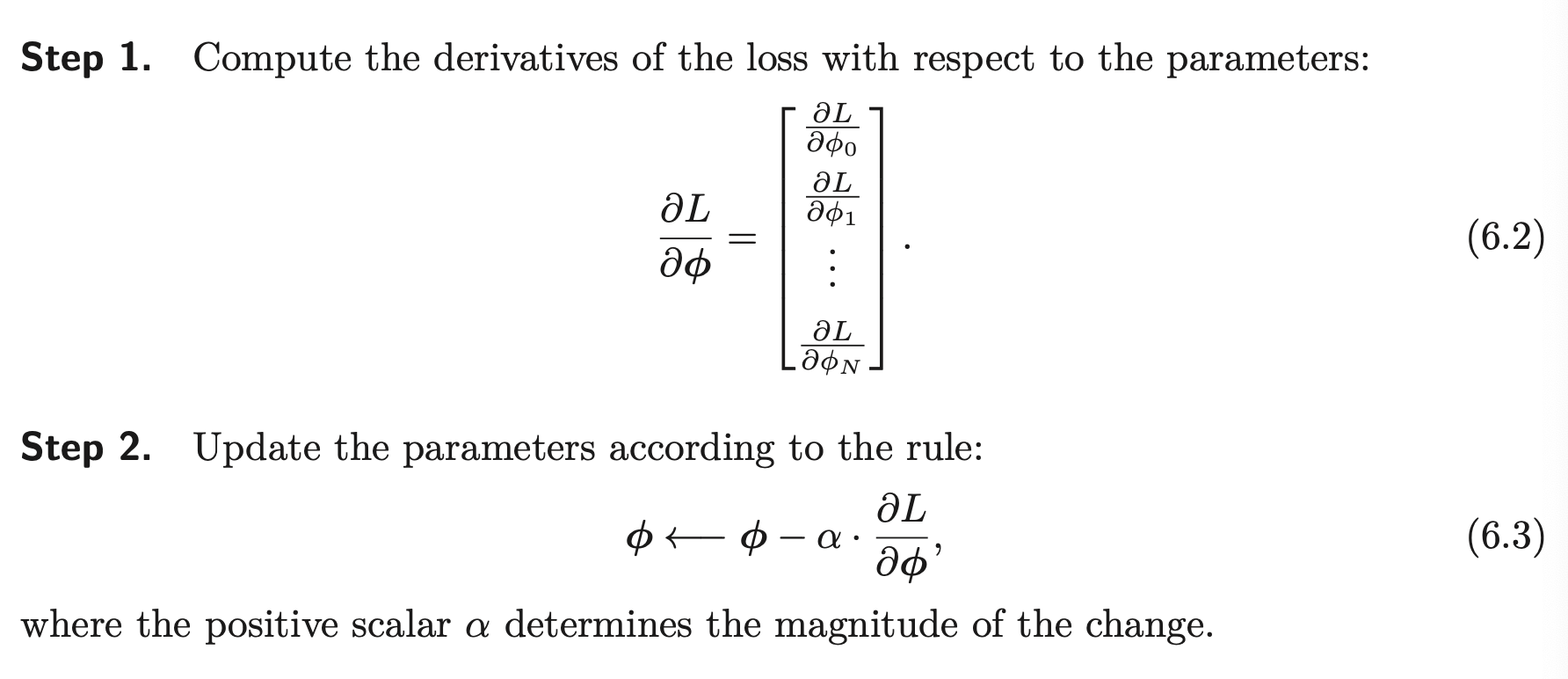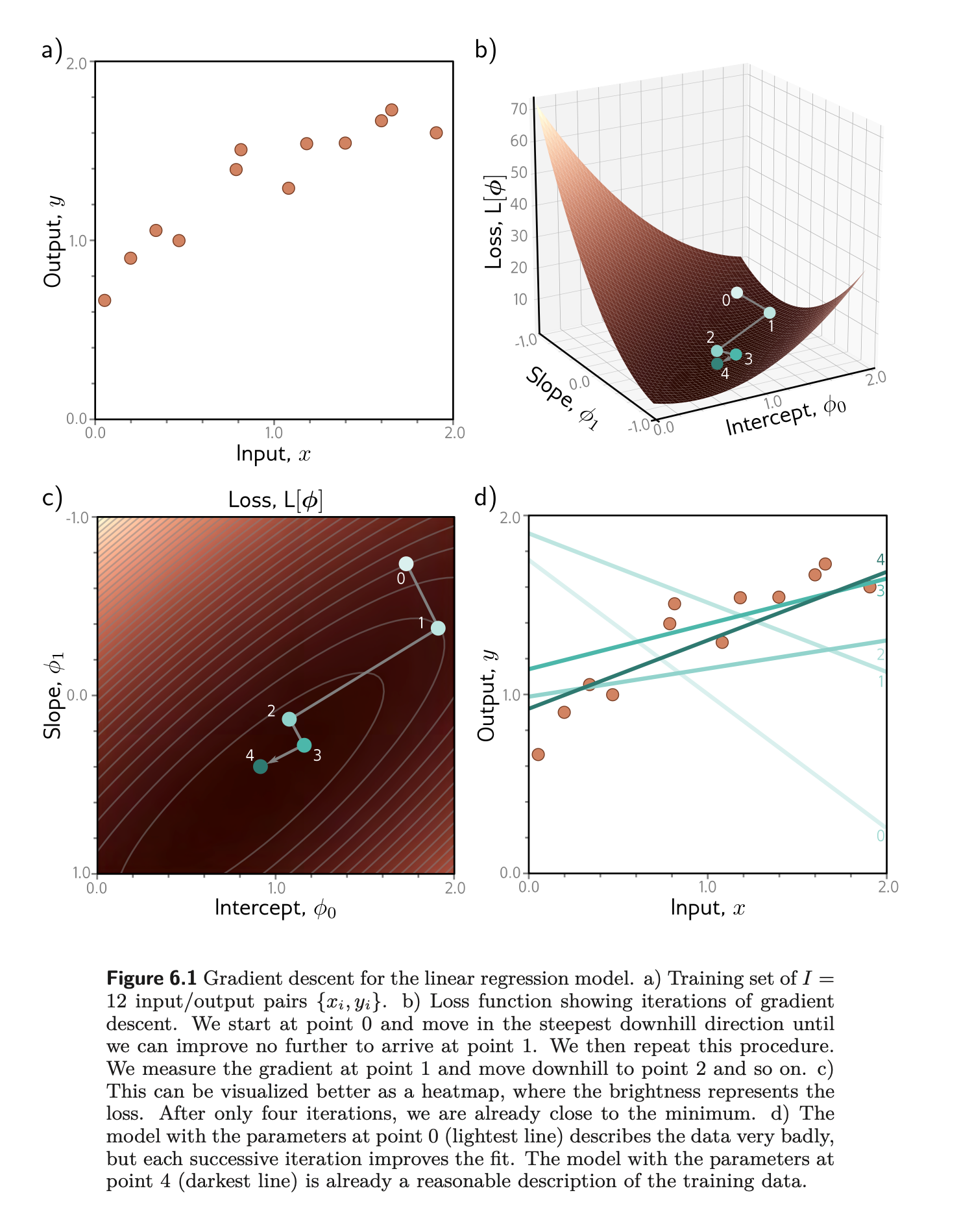
- θ=θ−η⋅∇θJ(θ)
- It starts with some coefficients, sees their cost, and searches for cost value lesser than what it is now.
- It moves towards the lower weight and updates the value of the coefficients.
- The process repeats until the local minimum is reached. A local minimum is a point beyond which it can not proceed.
- The first step computes the gradient of the loss function at the current position. This determines the uphill direction of the loss function. The second step moves a small distance α downhill (hence the negative sign). The parameter α may be fixed (in which case, we call it a learning rate), or we may perform a line search where we try several values of α to find the one that most decreases the loss.
- y=f[x,ϕ]=ϕ0+ϕ1x
- Use Least squares loss
- l1=(ϕ0+ϕ1xi−yi)2 is the individual contribution to the loss from the ith training example.




